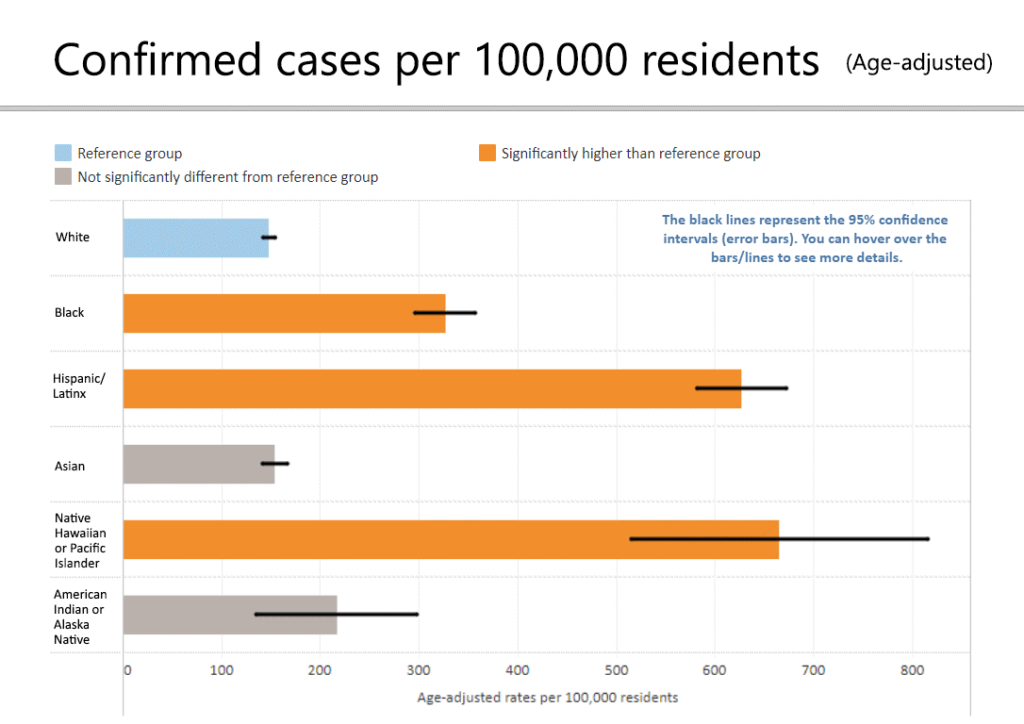Mirroring similar data from across the United States, in King County, COVID-19 is undeniably impacting communities of color disproportionally.
According to recently released numbers, Hispanic/Latinx, Native Hawaiian/Pacific Islanders and Blacks had significantly higher rates of COVID-19 cases and hospitalizations as compared to Whites. While the total number of deaths from COVID-19 is highest among Whites, the rate of death per 100,000 for Hispanic/Latinx and Native Hawaiian/Pacific Islanders is more than double that of Whites.
COVID-19 is exacerbating health inequities and is likely to take the biggest toll on communities already impacted due to a long history of structural racism – ranging from housing policies to discrimination in health care, and more.
As can be seen from the graph below, confirmed cases in these groups are significantly higher than in the overall white population.

Looking at the following table reveals an even more disturbing trend emerges. Over time, cases among communities of color are continuing to increase while cases amongst the white population have decreased.
Percent of COVID-19 Cases over time
White
Hispanic/LatinX
Asian
Black
Native Hawaiian or Pacific Islander
72%
6%
16%
5%
1%
50%
23%
13%
10%
2%
The point is, the narrative around the disproportionate impact of COVID-19 is real and backed by data. As we work our way through this crisis as a community and as a society, we must continue to center not only these populations but also the institutional policies and mind-sets so as not to perpetuate these types of unequitable impacts.
Ask yourself, whether in your formal job role or in your role in your community, who’s missing from the conversation around how we all get through this? How can you invite those missing voices? Reflecting on these types of questions is called adaptive leadership. This is one of the core principles of the Collective Impact model we use at Eastside Pathways to promote meaningful, long-lasting change. Because only by joining together can we make our way safely, and with a better life for all, through this wilderness of sickness.
Note: portions of this blog post have been adapted from a recent article in Public Health Insider. Data is from the King County Department of Health.

